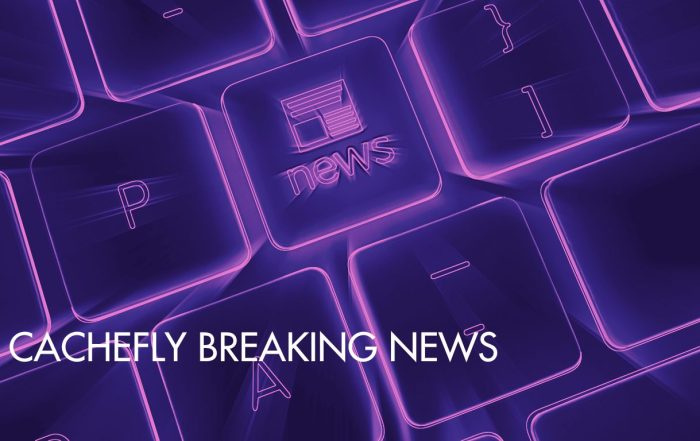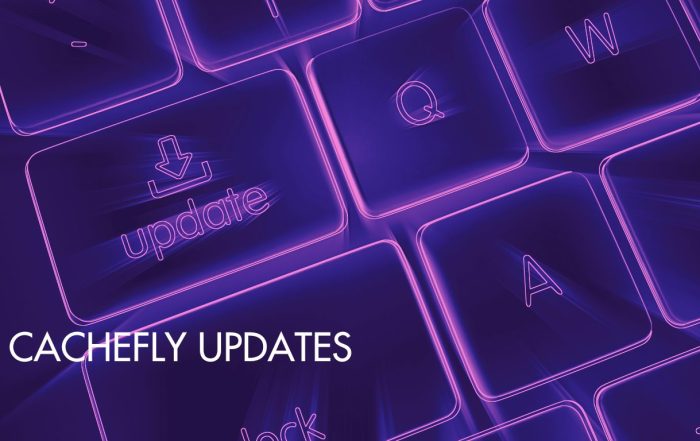
Turn the Beat Around: Using Green CDNs in Music Streaming Services
Key Takeaways
- Understanding the environmental impact of music streaming services, especially concerning server energy consumption and data transfer processes.
- Exploring how Content Delivery Networks (CDNs) can significantly minimize energy use by optimizing data delivery.
- Recognizing the role of green coding practices and energy-efficient streaming protocols in reducing server load and energy usage.
- Assessing the potential of renewable energy sources in powering CDN operations for a more sustainable future.
The digital revolution has transformed the way we consume music. From vinyl records and cassette tapes, we’ve moved to CDs, downloads, and now, streaming services. While these changes have made music more accessible, they’ve also shifted the industry’s energy usage patterns. But how does this digital shift impact the environment? More importantly, what role do Content Delivery Networks (CDNs) play in this ecosystem?
Assessing the Environmental Impact of Music Streaming Services
The carbon footprint of digital music streaming is a complex issue tied to server energy consumption and data transfer processes. Imagine billions of people worldwide streaming their favorite tunes simultaneously — a lot of data zipping around, consuming energy. Streaming services have led to a significant shift in energy usage patterns compared to traditional music distribution methods like physical records or CDs.
However, the advent of Content Delivery Networks (CDNs) has made it possible to optimize data delivery, thereby reducing energy consumption. CDNs work by distributing the handling of requests across multiple servers, thus reducing the load on any single server. This efficient data distribution enhances user experience by reducing buffering and lessening energy usage, contributing to digital sustainability.
When it comes to sustainability in music streaming, green CDN practices come into play. A CacheFly article on green streaming highlights the importance of green coding practices and energy-efficient streaming protocols to lower server load and energy usage. Techniques like green coding and energy-efficient streaming protocols can drastically reduce server load and energy usage, making the streaming process more sustainable.
Moreover, the potential of using renewable energy sources in data centers to power CDN operations is another significant step towards sustainability. Data centers are notorious energy consumers, but integrating renewable energy sources like solar or wind power can make their operations more sustainable. This reduces the carbon footprint and paves the way for a greener and more sustainable future for the music streaming industry.
Assessing the environmental impact of music streaming services is the first step toward understanding and implementing sustainable practices in the industry. By understanding the energy consumption patterns and optimizing them using CDNs, we can make music streaming a more environmentally friendly option. After all, who wouldn’t want to enjoy their favorite tunes knowing they’re also contributing to a greener planet?
Implementing Sustainable Practices in CDNs for Music Streaming
As we’ve discussed, sustainability in music streaming is a priority. It’s not just about providing a seamless user experience; it’s also about doing so in an eco-friendly manner. This section outlines the steps for integrating energy-efficient data centers and green hosting solutions into CDN infrastructure, explores the benefits of multi-CDN strategies, and dives into the advanced technologies shaping the future of green CDN practices.
Building Energy-Efficient Data Centers and Green Hosting Solutions
CDN infrastructure can be a significant energy consumer, but it doesn’t have to be. Integrating energy-efficient data centers and green hosting solutions is the first step toward a sustainable CDN operation. These practices involve optimizing server configurations, improving cooling efficiency, and utilizing energy management software. Furthermore, green hosting solutions often use renewable energy sources, further reducing the carbon footprint of the CDN infrastructure.
Optimizing CDN Caching and Implementing Advanced Compression Techniques
Next, we will discuss CDN caching and compression techniques, two critical factors in facilitating a greener service. According to Streaming Media, a reduction in bitrate via improved compression techniques enables more channels on a single server, leading to reduced bandwidth consumption throughout the CDN. In layperson’s terms, better compression means less data, which means less energy used. CDN caching works hand-in-hand with this, storing content closer to the user to minimize data transfers and reduce energy usage.
Exploring Multi-CDN Strategies
Regarding sustainability in music streaming, green CDN practices must consider load balancing, risk of service outages, and overall performance. That’s where multi-CDN strategies come in. By distributing content delivery across multiple CDNs, you can enhance load balancing, reduce the risk of service outages, and improve overall performance — all contributing to energy efficiency.
Adopting HTTP/3 and QUIC Protocols
The HTTP/3 and QUIC protocols are game-changers in the world of CDNs. They improve performance in high-latency and packet-loss environments, leading to more efficient data delivery and reduced energy usage. In other words, these protocols ensure your music doesn’t skip a beat, even in less-than-ideal network conditions, while keeping energy usage to a minimum.
Utilizing AI and Machine Learning
Finally, let’s talk about AI and machine learning – two buzzwords that are more than just hype. When applied to CDN operations, these technologies can be used for predictive content caching, minimizing unnecessary data transfers, and optimizing server resource utilization. Imagine a CDN that learns from user behavior and predicts what content to cache and where to cache it. That’s not just smart; it’s also sustainable.
Moving towards sustainability in music streaming: green CDN practices benefit the environment and enhance user experience and performance. By integrating energy-efficient solutions, optimizing caching and compression, leveraging multiple CDNs, and adopting advanced protocols and technologies, we can turn the beat around for a greener future in music streaming.
The Role of Multi-CDN Strategies in Sustainable Music Streaming
In the digital transformation era, multi-CDN strategies have become a core aspect of sustainable music streaming. But what exactly does it entail, and how does it contribute to green CDN practices? This section will answer these questions, taking you through the importance of multi-CDN strategies, their environmental benefits, and a case study of Spotify’s successful implementation.
Defining Multi-CDN Strategies
A multi-CDN strategy uses multiple Content Delivery Networks (CDNs) to distribute content delivery loads efficiently across different networks. Instead of relying on a single CDN, this approach uses several to ensure that content is delivered to users as quickly and efficiently as possible. It’s akin to having multiple routes to a destination—if one pathway encounters traffic, you have alternative routes to ensure timely arrival.
The Advantage of Leveraging Multiple CDNs
So, how does leveraging multiple CDNs lead to better load balancing, reduced risk of service outages, and enhanced overall performance? Think of it this way: A single CDN can get overloaded with requests, leading to slower delivery times or even crashes. By utilizing multiple CDNs, you distribute the load more evenly, reducing the strain on any single network and ensuring no single failure point exists. This results in a more reliable, efficient, and sustainable streaming experience.
Environmental Benefits of a Multi-CDN Approach
But it’s not just about performance — a Multi-CDN approach has significant environmental benefits, too. Efficient routing and decreased server load equate to reduced energy consumption. Additionally, using CDNs closer to end users means data doesn’t have to travel as far, leading to less energy use and lower CO2 emissions. It’s a win-win situation — improved user experience and a step towards sustainability in music streaming.
Case Study: Spotify’s Successful Multi-CDN Strategy
Need proof? Let’s look at Spotify’s successful implementation of a multi-CDN strategy. Spotify has always been at the forefront of technology, and its use of multiple CDNs for audio streaming is a testament to that. By aligning CDN services, they’ve created a lightning-fast streaming experience while reducing energy usage. It’s a shining example of what green CDN practices can achieve.
Selecting and Integrating Multiple CDNs
So, how do you select and integrate multiple CDNs into a music streaming service’s infrastructure? It’s crucial to consider factors such as geographical coverage, performance, reliability, and commitment to sustainability. Look for CDNs with a strong presence in your target markets, offer advanced features like load balancing and data compression, and are dedicated to green practices. Remember, the goal is not just to enhance performance but also to promote sustainability in music streaming.
As we delve deeper into the world of green CDN practices, it’s clear that a multi-CDN strategy is not just a nice-to-have but a must-have for any music streaming service committed to sustainability. It’s time to turn the beat around and dance to the rhythm of sustainable music streaming.
Advancing CDN Technologies for a Greener Future in Music Streaming
As the digital world continues to evolve, so must the technologies supporting it. In music streaming, CDN technology delivers content quickly and efficiently. But, as we strive for sustainability in music streaming, how can we ensure these technologies are green? This section will delve into the latest advances in CDN technologies and their implications for a greener future in music streaming.
Continuous Innovation in CDN Technology
With the growing demand for sustainable digital services, it’s clear that standing still is not an option. Continuous innovation in CDN technology is vital to keep pace with this demand. Every aspect of CDN technology needs to evolve, from developing energy-efficient data centers to adopting green coding practices. Remember, every kilobyte of optimized data, every millisecond of reduced latency contributes to less energy consumption and a greener future.
Green CDN Solutions: A Step in the Right Direction
Fortunately, the wheels of innovation are already in motion. New CDN solutions are being developed with sustainability at their core, optimized for VOD and live video platforms. These solutions support various playback formats for all platforms and devices, ensuring efficient content delivery while minimizing energy usage. These green CDN solutions represent a significant stride towards sustainability in music streaming.
The Potential of Edge Computing
But the innovation doesn’t stop there. Edge computing, which involves processing data closer to its source, is another promising development. By reducing latency and server load, edge computing can decrease the energy consumption of music streaming services. Imagine a world where each song you stream doesn’t have to travel halfway around the world to reach your device. That’s the power of edge computing.
Artificial Intelligence and Machine Learning: Enhancing CDN Efficiency
And let’s not forget the role of artificial intelligence (AI) and machine learning in enhancing CDN efficiency. From predictive caching that anticipates the content users will request to dynamic content delivery optimization that adjusts in real-time, these technologies are revolutionizing how CDNs operate. And, of course, greater efficiency translates to less energy consumption, bringing us closer to our goal of sustainability in music streaming.
Future Trends in CDN Technology
As we look to the future, exciting new trends are on the horizon. Consider the adoption of blockchain for decentralized content delivery. By distributing content across a network of nodes, blockchain technology could significantly reduce the load on central servers, leading to more efficient content delivery and less energy usage. While it’s still in the early days, the potential implications for sustainability in music streaming are certainly intriguing.
Indeed, the journey towards a greener future in music streaming is underway. With continuous innovation in CDN technology and the advent of green CDN solutions, we’re making strides towards reducing the environmental impact of music streaming. And with the potential of edge computing, AI, machine learning, and future trends like blockchain, it’s clear that the beat of sustainable music streaming will only get stronger.
Engaging Stakeholders in the Sustainability Conversation
The path toward sustainability in music streaming is not a solitary journey. It involves a collaborative effort from all stakeholders in the music streaming ecosystem. In this section, we’ll identify these key players, discuss engagement strategies, and highlight the importance of their roles in promoting and achieving sustainability.
Identifying Key Stakeholders in the Music Streaming Ecosystem
Who holds the reins of power in our quest for green CDN practices in music streaming? The answer lies in a diverse group of stakeholders, all with a part to play. Service providers, of course, are at the forefront and tasked with implementing sustainable technologies. Content creators influence production processes and can advocate for greener practices. Lastly, the consumers, whose preferences and choices can drive the demand for sustainable services, are a force to be reckoned with. Together, their actions can shape the future of sustainability in music streaming.
Strategies for Engaging Stakeholders
So, how do we get these stakeholders on board? Transparency is key. By providing clear and accurate information on energy usage and carbon footprints, service providers can demonstrate their commitment to sustainability. Fostering open dialogues about sustainable practices and initiatives can encourage participation and action. Remember, a well-informed stakeholder is an engaged stakeholder.
The Power of Consumer Awareness and Choice
Never underestimate the power of the consumer. As awareness of environmental issues grows, so too does the demand for greener services. Consumers can drive the market towards greener CDN practices by supporting music streaming services that prioritize sustainability. It’s a classic case of voting with your wallet – and the environment stands to win in this election.
Fostering Sustainable Partnerships
Partnerships also hold enormous potential in our pursuit of sustainability. CDN providers and streaming platforms can tap into a wealth of resources and expertise by collaborating with environmental organizations. These partnerships can foster the exchange of ideas, promote best practices, and ultimately contribute to more sustainable CDN operations. In the words of Helen Keller, “Alone we can do so little; together we can do so much.”
Regulatory and Policy Frameworks: Driving Sustainable Adoption
Finally, we must not overlook the role of regulatory and policy frameworks. By providing guidelines and incentives, these frameworks can encourage the adoption of sustainable technologies in the music-streaming industry. From tax breaks for green data centers to grants for research and development, policy interventions can be a powerful tool in our sustainability toolkit.
Sustainability in music streaming is a shared responsibility in the grand scheme of things. It requires the active participation of all stakeholders, from service providers and content creators to consumers. We can progress toward a greener future in music streaming through transparency, consumer choice, partnerships, and supportive policies.
So, as you navigate the digital music landscape, ask yourself: what part are you playing in this sustainability symphony? How can you tune your actions to the rhythm of sustainability?
About CacheFly
Beat your competition with faster content delivery anywhere in the world! CacheFly provides reliable CDN solutions that are fully tailored to your business.
Do you want to talk further about our services? We promise we’re human. Reach us here.
Product Updates
Explore our latest updates and enhancements for an unmatched CDN experience.
Book a Demo
Discover the CacheFly difference in a brief discussion, getting answers quickly, while also reviewing customization needs and special service requests.
Free Developer Account
Unlock CacheFly’s unparalleled performance, security, and scalability by signing up for a free all-access developer account today.
CacheFly in the News
Learn About
Work at CacheFly
We’re positioned to scale and want to work with people who are excited about making the internet run faster and reach farther. Ready for your next big adventure?



